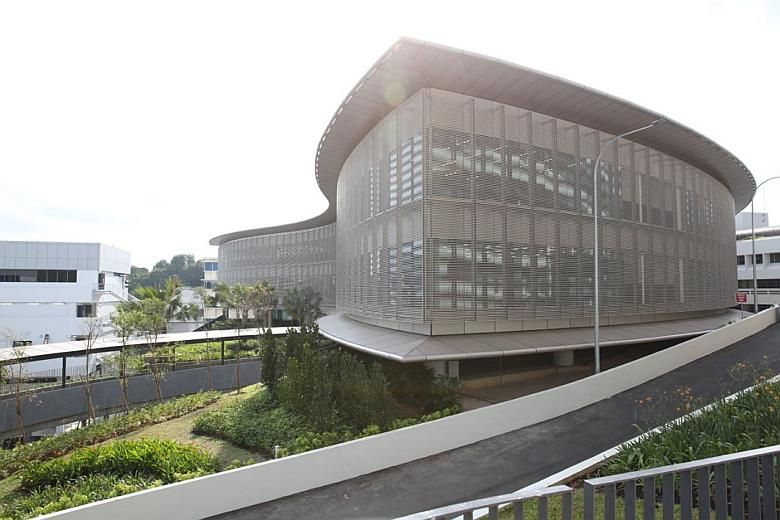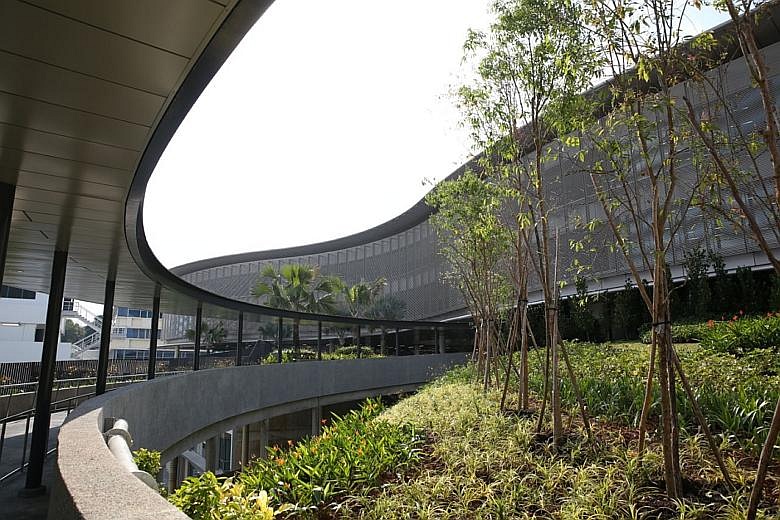NTU opens The Arc, its second learning hub with smart classrooms
Sign up now: Get tips on how to help your child succeed

NTU has launched its latest learning hub, The Arc, a six-storey building with 56 smart classrooms.
ST PHOTO: ONG WEE JIN
Follow topic:
SINGAPORE - Gone are the days of classrooms with university students sitting in rows of tables and chairs in mass lecture halls, listening passively to lecturers dish out information.
The Nanyang Technological University (NTU) now has more than 280 "smart" classrooms on campus, each equipped with multiple LED screens, flexible clustered seats and wireless communication tools.
Since 2015, the university has done away with traditional layouts of classrooms so that students can learn more proactively and in groups, to keep up with the changing demands of workplaces.
On Wednesday (Feb 21), NTU launched its latest learning hub, The Arc, a six-storey building with 56 smart classrooms.
The building has 13 project discussion rooms, a room for quiet reading and a 108-seat lecture theatre. Its two lower levels have rooms that serve as workshops for engineering students.
It will also house most of NTU's Singapore Centre for 3D Printing facilities, which will conduct research in smart technologies such as printable electronics, lightweight aircraft components and 3D-printed medical implants.
NTU president Subra Suresh said that The Arc is designed to create avenues for students to discuss ideas and interact across disciplines.
Facilities and infrastructure are important as "the way a classroom is designed influences the style of teaching, the delivery of knowledge and the effectiveness of the whole learning experience", he added.
With the new learning arrangements, termed the "flipped classroom" model, NTU students access course materials online before class. Class time is then used for deeper learning activities such as tackling problems in teams of five or six, and engaging in more discussions, with professors as guides.
The Arc is NTU's second learning hub, after its first, The Hive, was launched in 2015. The Hive, which has been nicknamed the "dim sum basket building", has another 55 smart classrooms with similar features.

At the event on Wednesday, Prof Suresh gave an update on NTU's target to redesign at least 50 per cent of its undergraduate courses to use the flipped-classroom method, saying that it is "on track".
To date, 32 per cent - or 314 courses - have been converted, with another 170 courses currently in the works.
"The Arc is an integral part of our Smart Campus approach - adopting digital technologies to support better learning and discovery, and to improve the sustainability of resources," Prof Suresh said.

The new development incorporates eco-friendly features such as energy-saving LED lighting, motion sensors and solar-powered systems.
Instead of walls, it comes with an aluminium sunscreen that reduces solar glare and heat, and keeps rain out while allowing ventilation throughout the day.
Its air-conditioning system saves energy by using passive cooling coils to chill the air without the use of fans. These coils cool the air as it sinks downwards, which moves warm air upwards.
Last year, the Arc was awarded the Green Mark Platinum, the highest award for sustainable building design in Singapore from the Building and Construction Authority.

